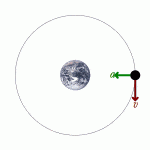Types Of Soil In Hindi
What are the types of soil in hindi? The is the question that this articles seeks to address effectively.
There are various types of soil, which in terms of soil texture has to do with the different sizes of mineral particles in a particular sample, since they determine the aeration, the drainage and the fertile suitability of a certain soil area. Soil types are classified according to many factors: color, depth, pH, productivity, texture, and formation process. India in particular is a country that is characterized by a diversity of soils completely different from one another. This is primarily due to factors such as the climate, the altitude, the composition of bedrock etc. In addition, this geographic area shows an intense disproportion between the annual distribution of rainfall and excessive heat, a fact that essentially accounts for the different types of soil in hindi. The types of soil in hindi are divided in eight major groups: a) laterite soils, b) black soils, c) arid and desert soils, d) red and yellow soils, e) saline and alkaline soils, f) alluvial soils, g) forest and mountain soils, h) peat and marshy soils.
Let’s take a quick look now at each of those types of soil in hindi and identify their distinct characteristics:
Laterite soils are formed under conditions of high temperature and heavy rainfall with alternating wet and dry periods. These soils are red to reddish yellow, they are rich in oxides of iron, but porous and very poor in lime content. They can be found in parts of Western Ghats and Eastern Ghats and in the coastal regions of Rantagiri and Malabar.
The black soils of hindi are mostly clay soils and are popularly known as Regur or “black cotton soils” because of their dark color and its suitability for growing cotton crops. The black color is due to the solidification of lava around the area of the Deccan Plateau, that took place thousands of years ago. Black cotton soil lack nitrogen and organic matter, but they do have the amount of calcium and magnesium that is required for the growth of plants.
Another type of soil in hindi is the desert soil, which is basically sandy and can found in desert regions such as the Thar Desert of Rajasthan. These soils are well supplied with soluble salts and have a high pH value, thus favoring plantation, provided of course that there is enough water.
Next on the list, are the red and yellow soils that are found in areas which receive low rain fall and are mainly cultivated during the monsoon rainy season. They may also lack nitrogen, phosphorus and humus, but they are rich in potash, and as such they are suitable for growing rice, tobacco, and vegetables.
Let’s continue the classification of the major types of soil in hindi with the saline soils. These develop in the coastal plains of Kerala and Orissa, and they are unfit for agriculture due to the accumulation of salts, which are in fact toxicin such great doses.
The most important among all types of soil in hindi, however, is alluvial soil. These are mainly founded in the plains of Northern India. They are famous all over the world for their fertility, but they lack in humus and nitrogen content (although this can be fixed with the right use of fertilizers).
The last two types of soil in hindi are the mountain and the peaty soils. The first are mainly founded on the hill slopes and the Himalayan region of the country. They are very rich in humus, but are stony and steep; not suitable for agriculture. However, they are an ideal supplier of forest products such as timber and fuel, while they are also suitable for the cultivation of tea, coffee and tropic fruits. Last but not least, peaty and marshy soils are commonly found in Kerala, Tamil Nadu, West Bengal and Orissa. They usually need pipe draining and are sour and free of lime, but they can be used for cultivation if fertilized properly.
These are the types of soil in hindi. Isn’t it an interesting mosaic of soils, or what?






